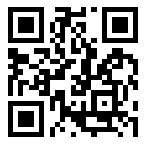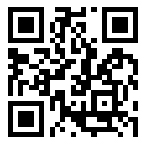Inventory of major events in the rubber tire industry in 2014
1. Oversupply of natural rubber and overcapacity of synthetic rubber
In 2014, the global supply of natural rubber exceeded demand, and the price continued to fall, falling back to the level of the 2008 international financial crisis. At the same time, the domestic production capacity of synthetic rubber is obviously excessive. The utilization rate of styrene butadiene rubber and butadiene rubber devices has fallen to 53% and 68% respectively, and isoprene rubber has even dropped to 15%.
At present, the price of natural rubber is still in a downward channel and has not stabilized. In the next two years, China will have 1 million tons of new synthetic rubber production capacity. This will seriously affect rubber producers and traders, as well as the product prices and market conditions of downstream tire companies.
2. Announcement of the Interim Management Measures for the Waste Tire Industry
The Ministry of Industry and Information Technology, in accordance with the requirements of the "Interim Measures for the Administration of the Access Announcement of the Comprehensive Utilization of Waste Tires", publicizes the list of 21 comprehensive utilization enterprises (the first batch) of waste tires that meet the requirements of the access requirements and publicizes them to the society and industry Enterprises solicit opinions.
The Measures clearly stipulate how tire retreading and comprehensive utilization of waste tire companies apply for access, how the government and industry associations make public announcements and other specific procedures. This move aims to implement the "Access Conditions for Tire Retreading Industry" and "Access Conditions for the Comprehensive Utilization of Waste Tires", standardize the development of the comprehensive utilization of waste tires, and improve the level of comprehensive utilization of waste tires.
On December 23, the Ministry of Industry and Information Technology announced the list of companies (the second batch) that meet the "Access Conditions for Tire Retreading Industry" and "Access Conditions for the Comprehensive Utilization of Waste Tires".
3. China Rubber Association issued "Green Tire Technical Specifications"
On February 24, the China Rubber Industry Association issued the "Green Tire Technical Specifications", and the trial began on March 1. This is the first domestic green tire industry self-discipline standard. It regulates the definition of green tires, puts forward green tire product performance requirements, raw material usage requirements, and recommends green tire production technology, laying a foundation for China's next step in implementing a tire labeling system. basis.
At present, the China Rubber Association has established the "Green Tire Industrialization Promotion Working Committee" and the "Green Tire Technical Support Center", and will certify tire testing agencies, refine guidelines for green tire raw materials, etc., in order to finally realize the tire labeling system.
4. The rubber testing professional committee was established
On March 27, the Rubber Testing Committee of China Rubber Industry Association was established in Qingdao, Shandong.
According to analysis, China’s rubber industry is currently in a historic stage of becoming stronger and stronger. The scientific and complete evaluation system, evaluation methods, and evaluation methods have a significant role in promoting the scientific development of the rubber industry. This makes rubber inspection and testing technologies and methods , Instruments and equipment are getting more and more attention. In this respect, the establishment of this professional committee is of extraordinary significance.
5. The U.S. has "double reversed" for passenger car and light truck tires in China
On June 3, the United States Iron and Steel Workers' Federation (USW) filed an application with the US Department of Commerce and the US International Trade Commission (ITC) to request the launch of anti-dumping and countervailing investigations against passenger cars and light truck tires from China. It is understood that this is the largest amount of trade remedy measures suffered by the domestic tire industry so far.
As the country with the largest car ownership in the world, 50% of the tires in the United States are imported, and it is also the most important overseas market for Chinese tires. Its imported tires account for about one-third of China's total tire exports.
6. The Ministry of Commerce terminates anti-dumping measures on imports of styrene butadiene rubber
On September 8, the Ministry of Commerce stated that within the time limit specified in the announcement, the domestic styrene-butadiene rubber industry did not submit an application for a final review, and the Ministry of Commerce also decided not to initiate a final review investigation. So far, since September 8, 2014, the anti-dumping measures applicable to imports of styrene butadiene rubber originating in Russia, Japan and South Korea have ceased to be implemented.
Styrene-butadiene rubber is an important raw material for tire production. Since 2009, China has imposed high tariffs of up to 38% on styrene-butadiene rubber imported from the aforementioned countries to limit the import volume of styrene-butadiene rubber and protect the country’s styrene-butadiene rubber industry. development of.
7. The Ministry of Industry and Information Technology issued the "Tire Industry Access Conditions"
On September 17, the Ministry of Industry and Information Technology issued the "Tire Industry Access Conditions" and announced that it will be implemented on October 1, 2014. The issuance of this policy will play a very important role in the development of the tire industry, industrial integration and industry regulations.
It is reported that the access conditions have made clear provisions for companies investing in tire production equipment. At the same time, it also encourages the development of energy-saving and environmentally friendly green tires and encourages the development of advanced production technologies. Industry insiders said that most tire companies can meet the above standards, which will have a better effect on standardizing industry development and eliminating outdated production capacity.
8. The U.S. countervailing duty on tires from China is the highest or more than 80%
On November 24, local time, the U.S. Department of Commerce determined in a preliminary ruling that passenger car and light truck tires imported from China have received excessive government subsidies. The U.S. intends to impose “countervailing duties” on such products. $3 billion. According to the preliminary findings announced by the US Department of Commerce, Chinese tire companies will be levied on punitive tariffs ranging from 17.7% to 81.3%.
Prior to the special tire protection case that began in 2009, the United States imposed punitive tariffs of 35%, 30%, and 25% on passenger car and light truck tires from China for three years. According to data, during the special safeguard case, the export volume of Chinese tires to the United States once dropped by more than 60%. It is predicted that the duration of the "dual reverse" case will be longer than that of the special protection case that year, and the final tariff is expected to reach 60%.
9. The National Standards Committee issued the "General Technical Specifications for Composite Rubber"
On December 31, the General Administration of Quality Supervision, Inspection and Quarantine and the National Standardization Management Committee formally issued the National Recommended Standard for Composite Rubber "General Technical Specifications for Composite Rubber" with the 2014 Announcement No. 33. The standard number is GB/T 31357-2014. The standard stipulates that the raw rubber content in the composite rubber is not more than 88% (mass fraction), and the non-rubber mixture is 12%.
It is reported that this matter has caused widespread concern among Southeast Asian rubber-producing countries and domestic industries. The Thai Rubber Association submitted an official letter to the Thai government. Industry insiders also believe that setting the raw rubber content below 88% is closing the door to the import of composite rubber, which may cause chaos in the natural rubber trade market.
10. Import tariffs on natural rubber increased in 2015
On December 16, the Ministry of Finance stated that as of January 1, 2015, some adjustments to import and export tariffs will be carried out, including an appropriate increase in the provisional import tax rate of natural rubber and other commodities.
According to regulations, the provisional import tariff rate of natural rubber in China will be adjusted from 20% or 1200 yuan/ton to 20% or 1500 yuan/ton, an increase of 300 yuan/ton; the provisional tariff rate for imported natural rubber latex will be increased from 10% or 720 yuan/ton , Adjusted to 10% or 900 yuan/ton, an increase of 180 yuan/ton.
In addition, since January 1, 2015, the "2015 Tariff Implementation Plan" has been implemented, and synthetic rubber import tariffs have been partially adjusted.




